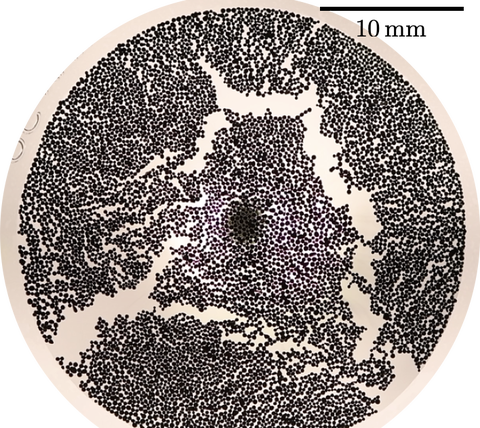Known as the Cheerio's effect, particles on the fluid-fluid interface spontaneously form aggregates through capillary interactions and form stable rafts. The unique low-dimensional materials properties of rafts have inspired a number of technological innovations, ranging from liquid marbles, bicontinuous gels, to environmental remediation, such as oil spill clean-up. However, very few studies examine the effects of the moving interface on the assembly process of particle rafts, which can potentially lead to different microstructures.
Funded by UMN MRSEC seed grants (co-PI: Prof. Xiang Cheng), we conducted systematic experiments in which granular particles on the fluid-fluid interface are bi-axially compressed to the point of failure. We started with two layers of immiscible fluids separated by granular particles inside a funnel. As the lower fluid is quasi-statically withdrawn from the funnel, the shrinking fluid-fluid interface compresses the particle raft and gives rise to two failure modes: collective folding of the raft versus falling of individual particles. To rationalize the experimental findings, we built a continuum model based on the physical ingredients that are explicitly present in the system, in lieu of ad hoc macroscopic materials properties (e.g., bending modulus). The variational formulation includes the surface and potential energies of the raft and fluids, the repulsion upon particle contact in the total energy, and viscous dissipation in the work done.
